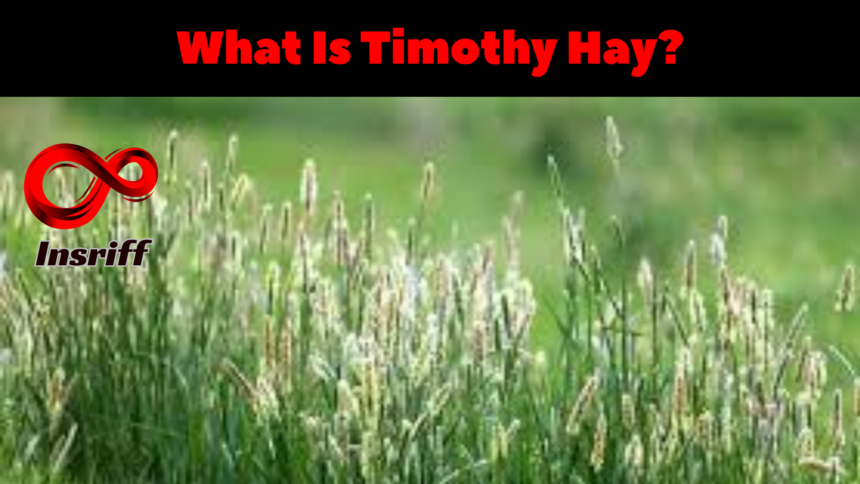Timothy hay is an essential part of any small herbivorous pet’s diet plan, and it helps maintain their regular health and fitness levels. Examples of these pets are chinchillas, guinea pigs, and rabbits. It serves as more than just shelter; for these woody companions, it’s a nutrient-rich forage with several advantages. The origins, nutritional value, varieties, appropriate harvesting, and significance of Timothy hay in promoting the healthiest possible lifestyle for your beloved pets are all important considerations.
Understanding Timothy Hay: Origins and Varieties
European native Timothy hay, or Phleum pratense as it is technically named, is an excellent season grass. Because of its high fiber content, low calcium level, and well-balanced nutrient profile, it became known as the ideal food for small herbivores. There are various hay types; the primary and secondary cuttings are the most common. In comparison to the second cutting, which is softer, leafier, and more nutrient-dense, the primary cuttings are rougher and have more giant mature stalks.
Nutritional Composition of Timothy Hay
Timothy hay’s extremely high nutritional content is one of the main factors that attract very small herbivores to it. It is a fantastic source of fiber, which is necessary to maintain healthy digestion and avoid gastrointestinal problems. Timothy Hay offers vital minerals and nutrients, including calcium, vitamin D, and nutrition A, all of which are necessary for strong bones. Additionally, the material’s high fiber content helps to avoid dental problems by supporting the growing teeth of animals like rabbits.
Health Benefits for Small Herbivores
Timothy Hay gives workout benefits for small herbivores. Regular consumption aids in maintaining a healthy weight, stopping obesity, and reducing the danger of digestive troubles consisting of hairballs. The constant chewing necessary to break down the fibrous hay also helps maintain dental health by preventing tooth overgrowth, a common problem in many small animals.
Read the detailed benefits of Timothy Hay.
Choosing the Right Timothy Hay
When selecting this hay for your pets, it’s vital to remember shade, texture, and reduction factors. The best hay needs to have an inexperienced shade, indicating freshness, and a smooth texture with a mixture of leaves and stems. Second-cut Timothy hay is regularly recommended due to its softer texture and higher nutritional content material. Avoid overly brown or dusty hay, as these may lack essential nutrients and pose respiratory risks to your pets.
Proper Harvesting and Storage
Timothy hay must be harvested at the peak of its nutritional value. The harvest timing influences the stability of fiber, protein, and vitamins within the hay. After harvesting, proper drying and storage are critical to save you from mildew growth and keep the hay fine. Storing hay in a fab, dry region in a well-ventilated container ensures that it retains its nutritional value.
Incorporating Timothy Hay into Your Pet’s Diet
This hay must shape the inspiration of your small herbivore’s diet. It may be furnished in limitless portions, permitting your puppy to graze throughout the day. Additionally, offering several hays, such as meadow hay or orchard grass hay, can add range to the diet and encourage foraging behaviors.
Common Mistakes to Avoid
To ensure the fitness and well-being of your pets, it’s vital to avoid commonplace errors associated with Timothy hay. Some of these consist of offering hay with added flavorings or preservatives, as those can be harmful to small herbivores. Overlooking the importance of fresh hay or relying solely on pellets can also cause dietary imbalances.
Conclusion
Timothy is an important hay of the diet for small herbivorous pets, contributing to their essential fitness and happiness. By expertise in its origins, nutritional content, types, and proper care, you could ensure that your furry companions get hold of excellent first-rate hay for a balanced and pleasurable life.
FAQs
Q1: Which season is ideal for planting Timothy Hay?
It is possible to develop correctly Timothy stands within the overdue summer time, early fall, or spring. If clover or alfalfa are inter-seeded with timothy, Undersander shows a seeding rate of 4 kilos according to acre.
Q2: Which is the fine cutting of Timothy Hay?
The term “first cut” refers to the first harvest, “second reduce” to the second harvest, and so on. The second cut of Timothy hay is commonly the greatest for rabbits. The 1/3 cut is softer and has extra leaves than the first, which are coarser and might have more excellent stems.
Q3: Why is Timothy Hay famous?
Because of its high fiber content material and deliciousness, it has become an incredibly sought-after forage supply. Because it contains the fiber required for wholesome gastrointestinal features, Timothy grass hay is often utilized as the primary fodder supply in a horse’s weight-reduction plan.









